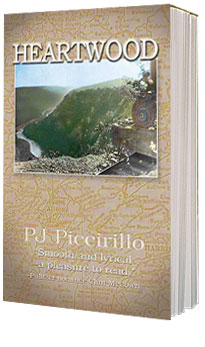Heartwood | Author's Notes
Lessons Learned, And Learned Still
With the disappearance of Pennsylvania’s woods, a fledgling environmental awareness began inspiring action. As early as the 1870s, botanist Joseph Rothrock, who later became Pennsylvania’s first commissioner of forestry, had started a campaign for forest protection in the state. Both he and Gifford Pinchot, the first chief forester of the United States, and future governor of Pennsylvania--a man whose family fortune was built on timbering--eventually promoted schools of forestry, and each ensured government purchase of cutover lands for forest reserves. Their legacy accounts for the Allegheny Plateau’s millions of acres of public forestland--state forests, game lands, and a national forest (the largest east of the Mississippi). Rothrock became the namesake of a Pennsylvania state forest, and the state park named for Gifford Pinchot is among the commonwealth’s largest.
The story of the Allegheny forestland eventually aroused many champions of the wilderness preservation movement. Howard Zahniser, who grew up along the banks of the Allegheny River, wrote the Wilderness Act of 1964. Johnstown Congressman John P. Saylor was the principle author of the Wild and Scenic Rivers Act of 1968. And native Allegheny writers Edward Abbey and Rachel Carson were two of America’s most gifted defenders of wilderness and wildlife.
Pine stumps 150 years old, bearing the chars of the old forest fires, stand today among the successive trees of the new Allegheny forest. A mosaic of state lands, the Allegheny National Forest, and private lands open to the public, spreads among red brick industrial burgs--relatively self-sufficient communities of extremely self-sufficient people--where visitors from afar stay between hiking, camping, hunting, fishing and many other forms of outdoor recreation.
Again, the tier is world renowned for its trees--hardwoods this time. The aesthetic value of its breathtaking vistas, rare solitude and wild places is increasingly appreciated, though--in some eyes--all the more exploited. Writers such as PJ Piccirillo warn that the modern threats are the dishonest threats--predatory sights set on the tier by developers and politicians who disguise personal agendas or desires for votes as concern for a backwoods, “repressed” people, an ilk who, ironically, live by choice in a foreboding landscape, folk poor by modern standards, yet viewed with secret admiration by outsiders.

